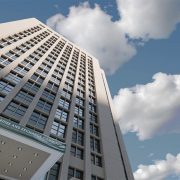Credit growth picked up pace in Feb, fastest in 9 mos–BSP

Bank lending grew at its fastest pace in nine months in February, with consumer loans continuing to show strength despite the high interest rate environment.
Excluding their lending to each other, outstanding loans of universal and commercial banks grew 8.6 percent year-on-year to P11.61 trillion, latest data from the Bangko Sentral ng Pilipinas (BSP) showed.
This was the fastest loan growth recorded since May 2023. The reading also beat the annualized 7.8-percent uptick in bank credit in January.
On a month-on-month basis however, bank lending rose by just 0.7 percent. For Michael Ricafort, chief economist at Rizal Commercial Banking Corp., there was still some weakness in loan demand as the economy continued to absorb the previous anti-inflation rate hikes of the BSP.
In a commentary, Ricafort said the February credit expansion was “still partly weighed by the still relatively higher interest rates that made borrowings more expensive.”
Highest in almost 17 years
At its meeting earlier this week, the powerful Monetary Board left the BSP’s key rate untouched at 6.5 percent, the highest in almost 17 years, after fresh data showed inflation in March inched closer to the upper-end of the central bank’s 2 to 4 percent target range.
Banks use the BSP’s benchmark rate as a guide when charging interest rates on loans. By making borrowing costs more expensive, the BSP wants to temper strong demand for commodities with limited supply. This, in effect, tames inflation.
Consumer loans
The last time the BSP delivered an anti-inflation rate hike was during an off-cycle decision in October last year, when the MB lifted the key rate by 25 basis points (bps). Overall, the BSP had raised its policy rate by a total of 450 bps in the current cycle, among the most aggressive in Asia.
What lifted overall credit growth in February despite the tight financial conditions was the robust 25.2-percent expansion in consumer loans, thanks to sustained increase in credit card (+30.1 percent) and motor vehicle (+19.1 percent) loans.
Meanwhile, loans to businesses expanded to 6.8 percent, from 5.9 percent previously, driven by higher lending to firms engaged in real estate activities (11.6 percent) and electricity, gas, steam and air conditioning supply (11.2 percent).
Amid persistent price risks, BSP Governor Eli Remolona Jr. somewhat dashed hopes for an early easing after he floated the possibility of a late rate cut in the first quarter of 2025 should inflation fail to show a more convincing downtrend.
“For the coming months, easing trend in headline inflation near the central bank targets would eventually justify local policy rate cuts later in 2024,” RCBC’s Ricafort said. —Ian Nicolas P. Cigaral INQ

















